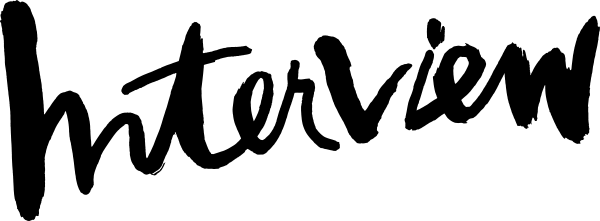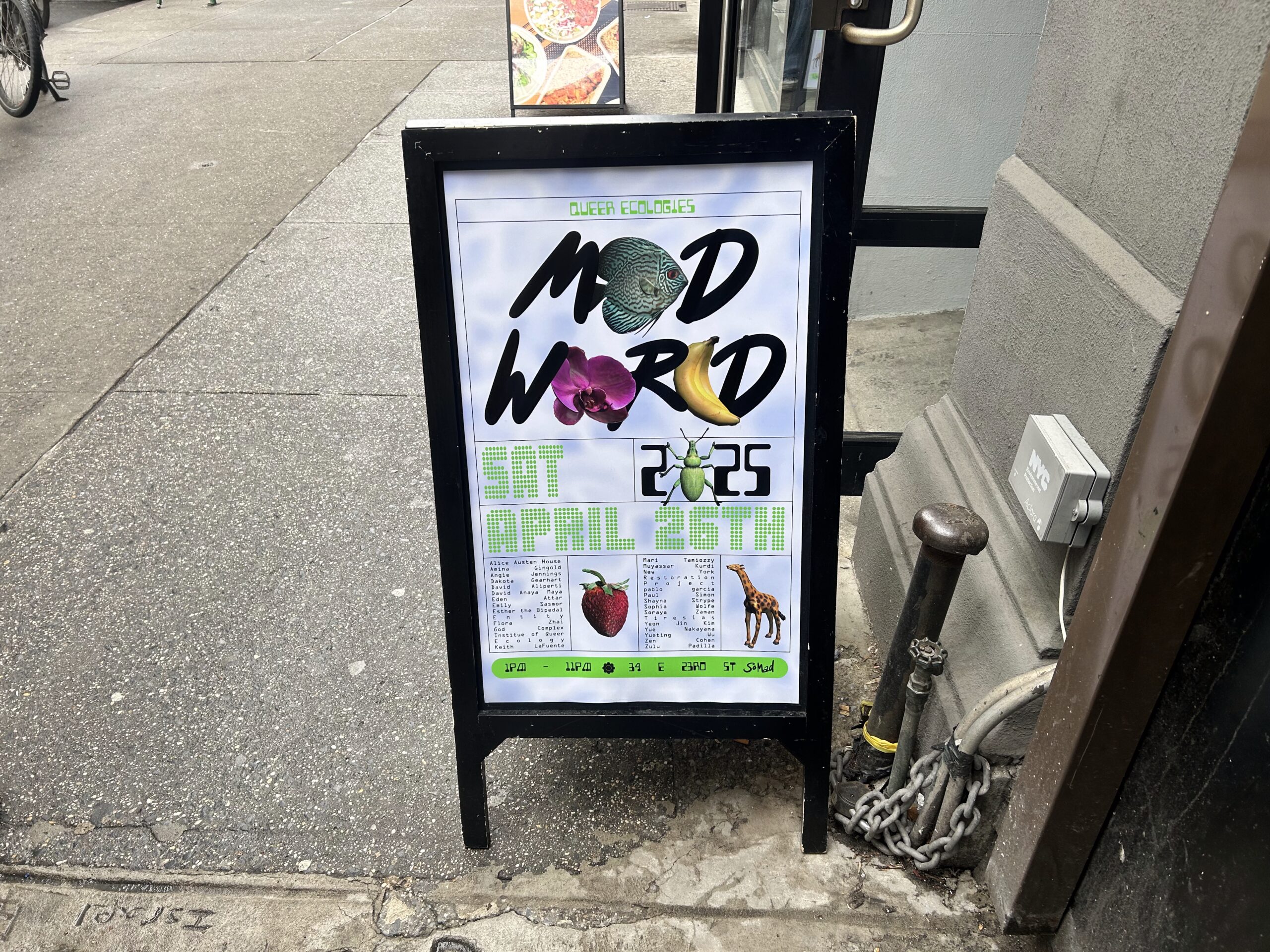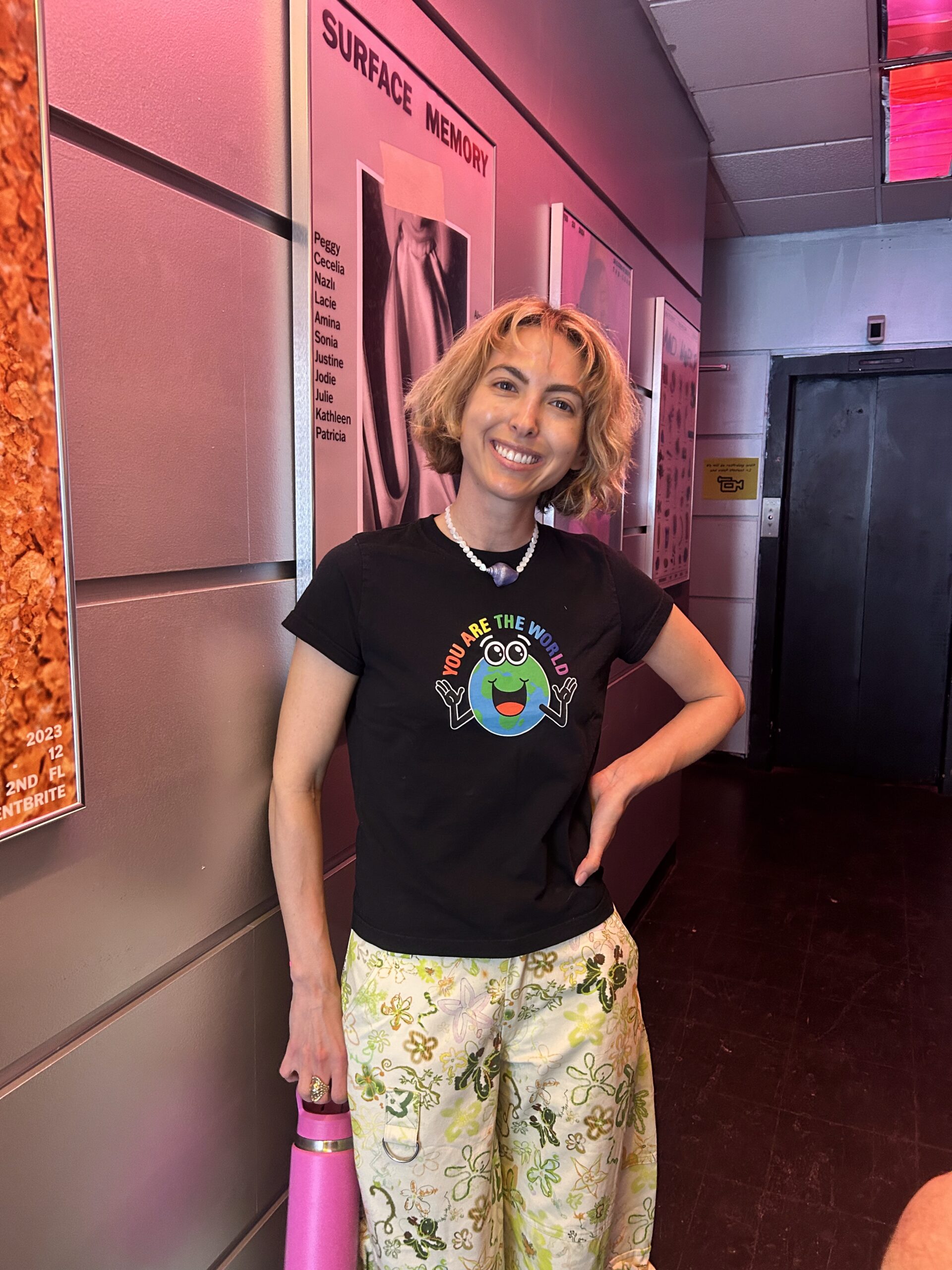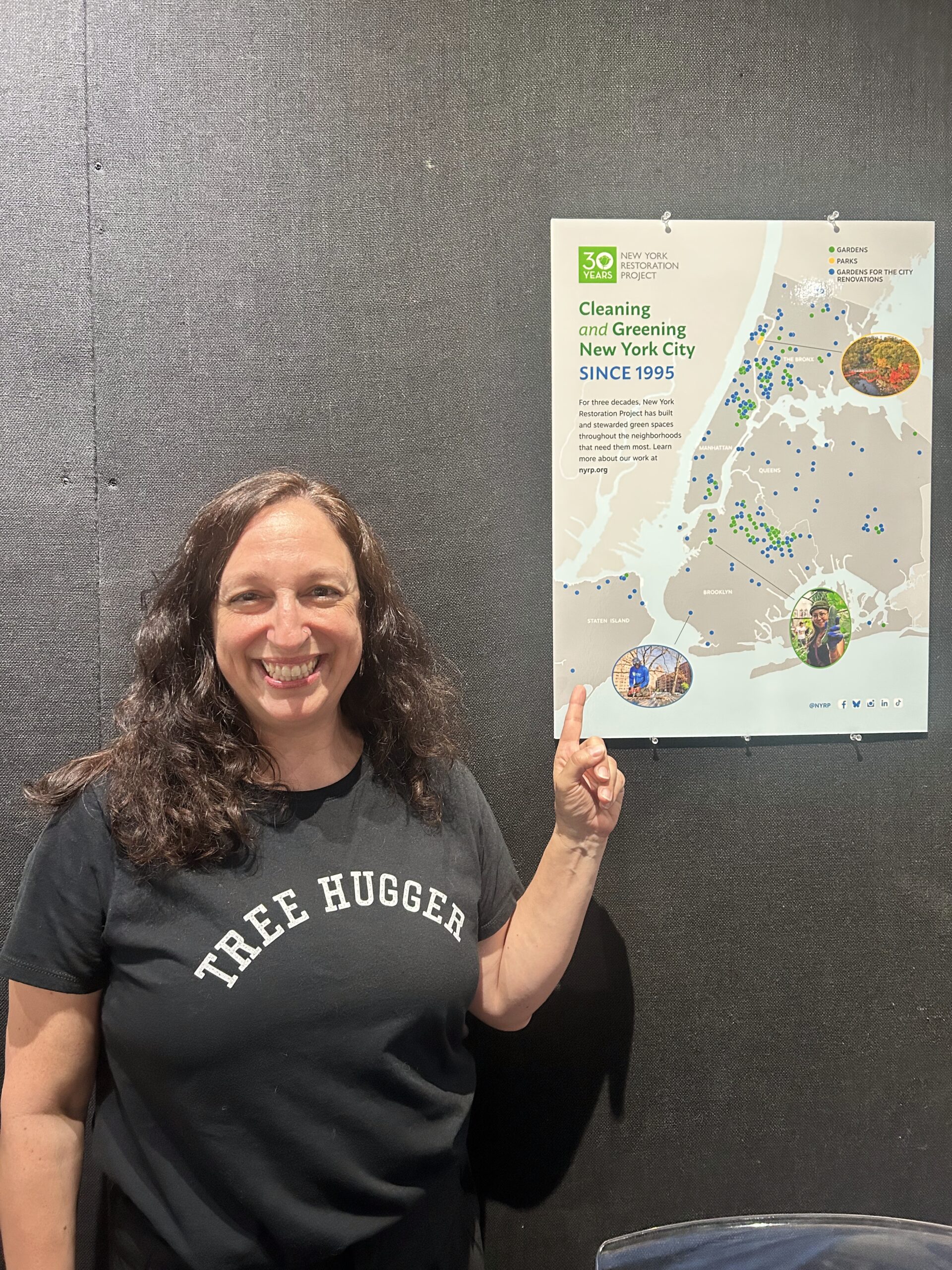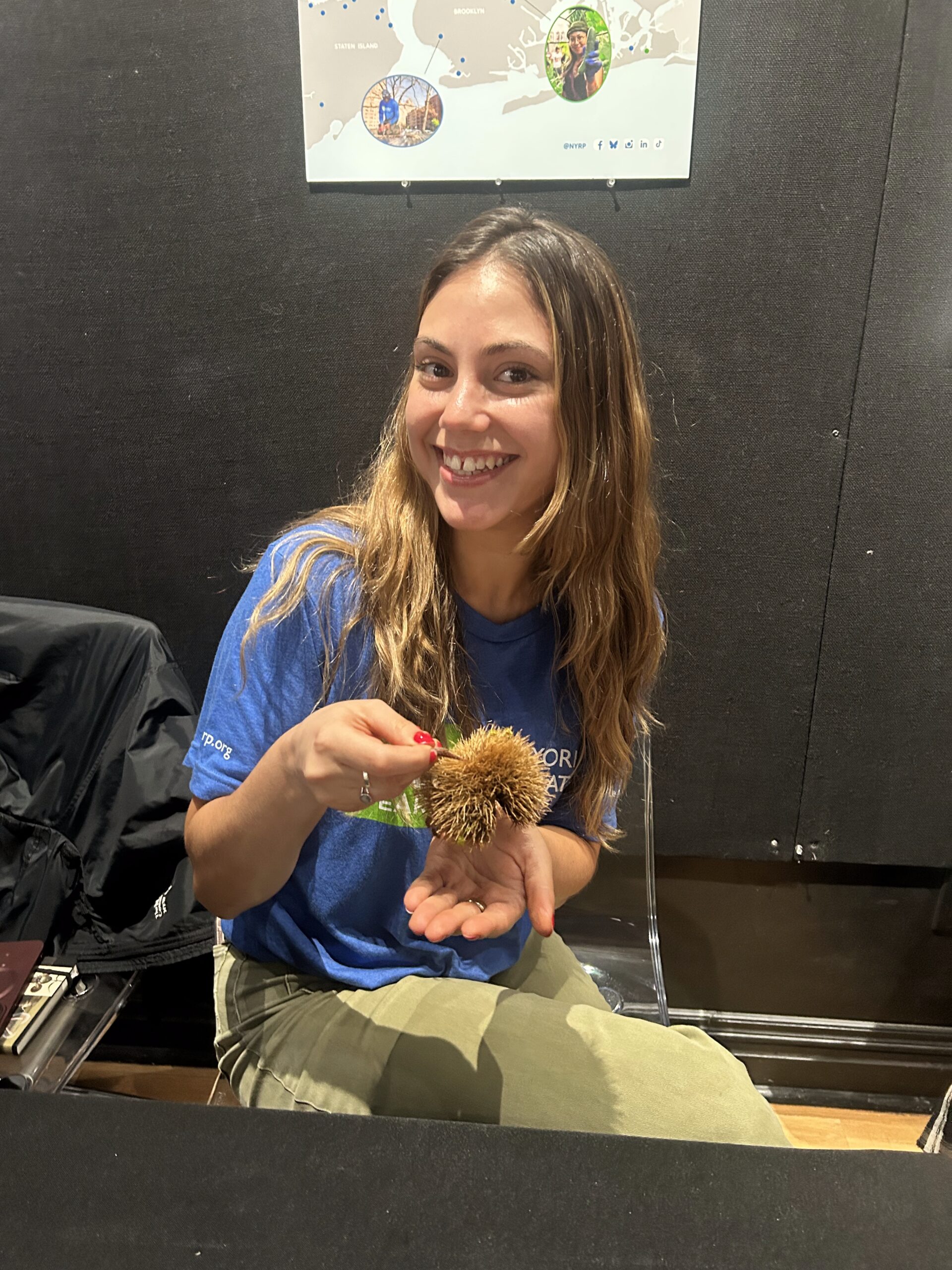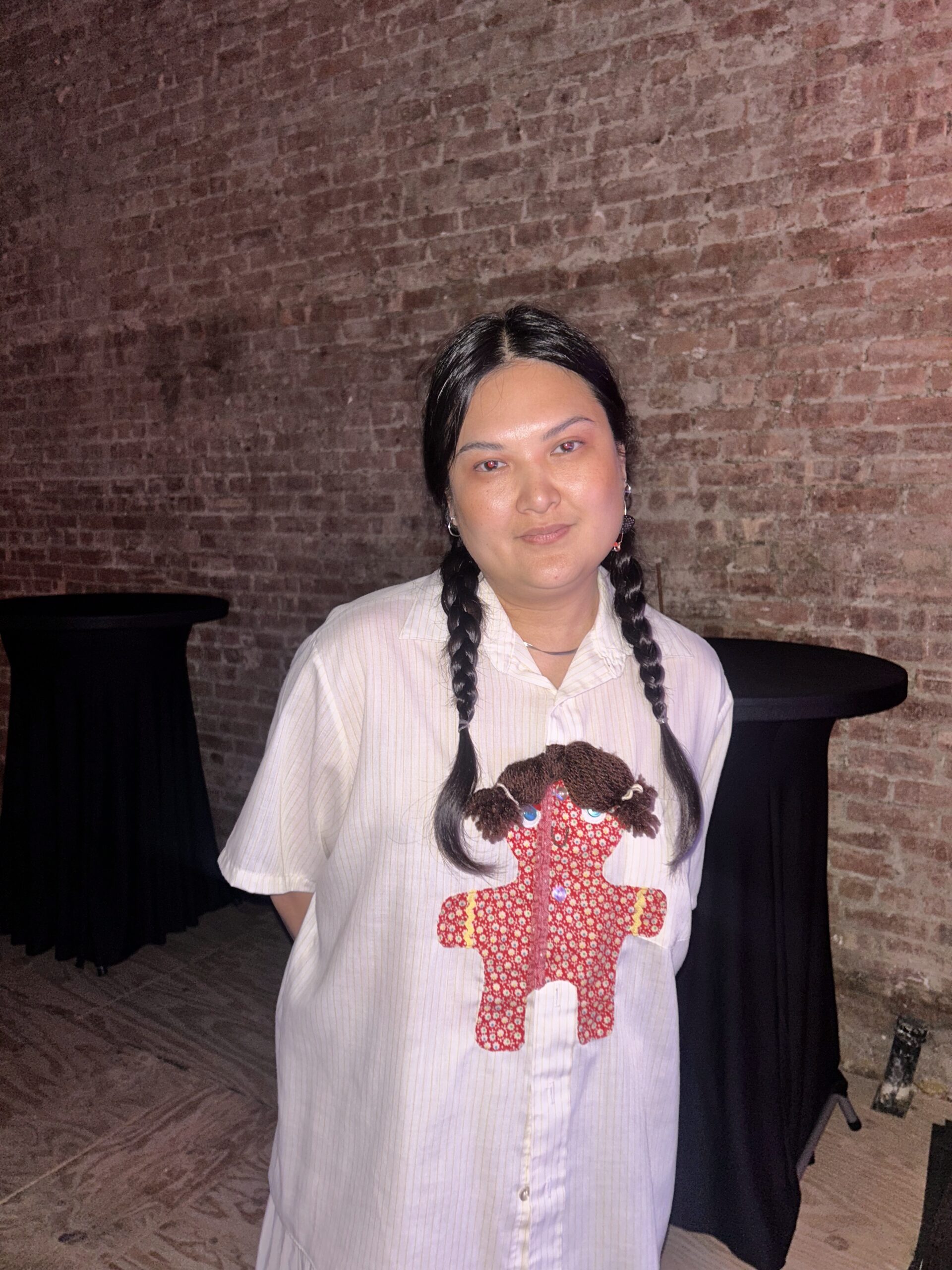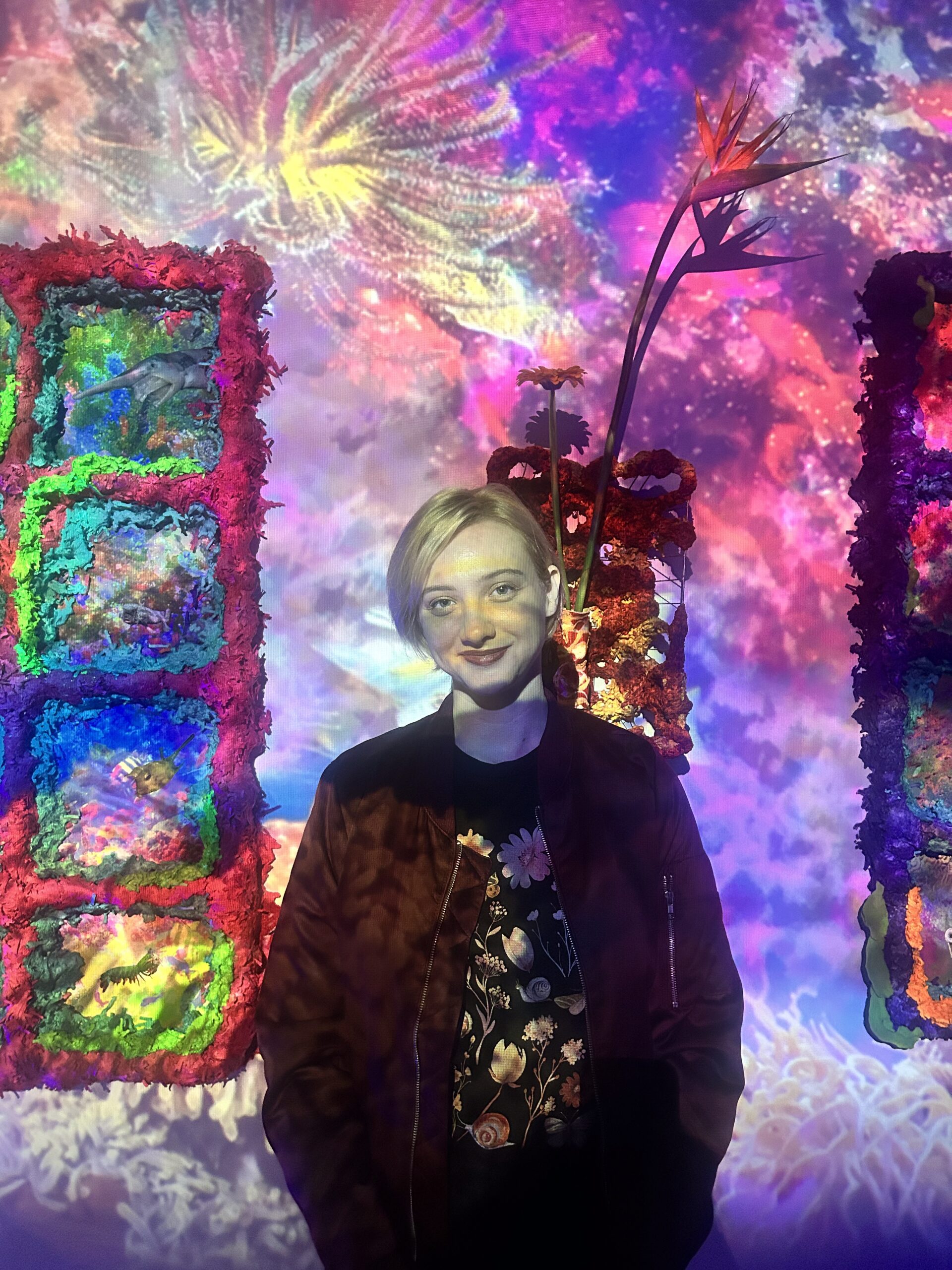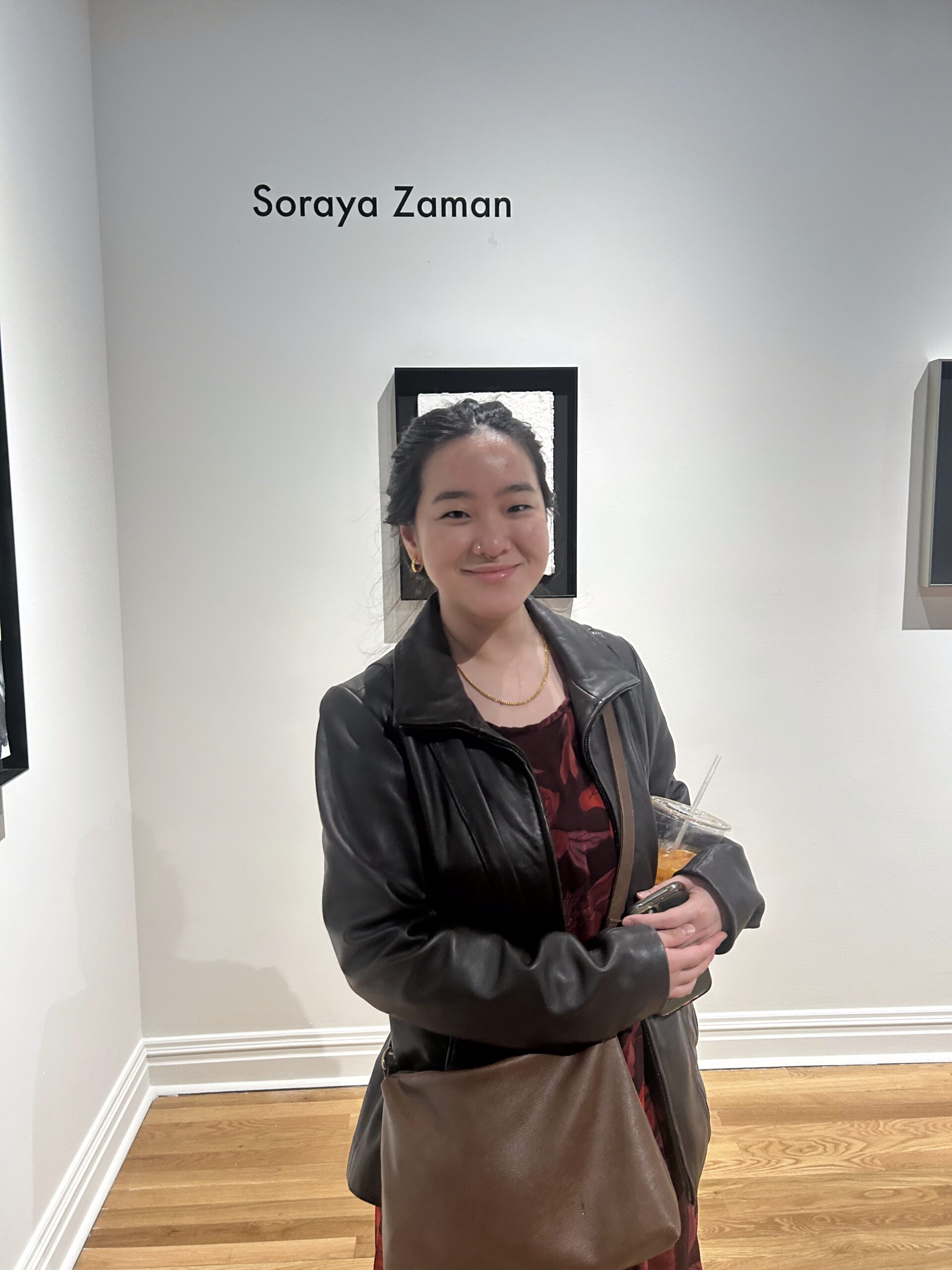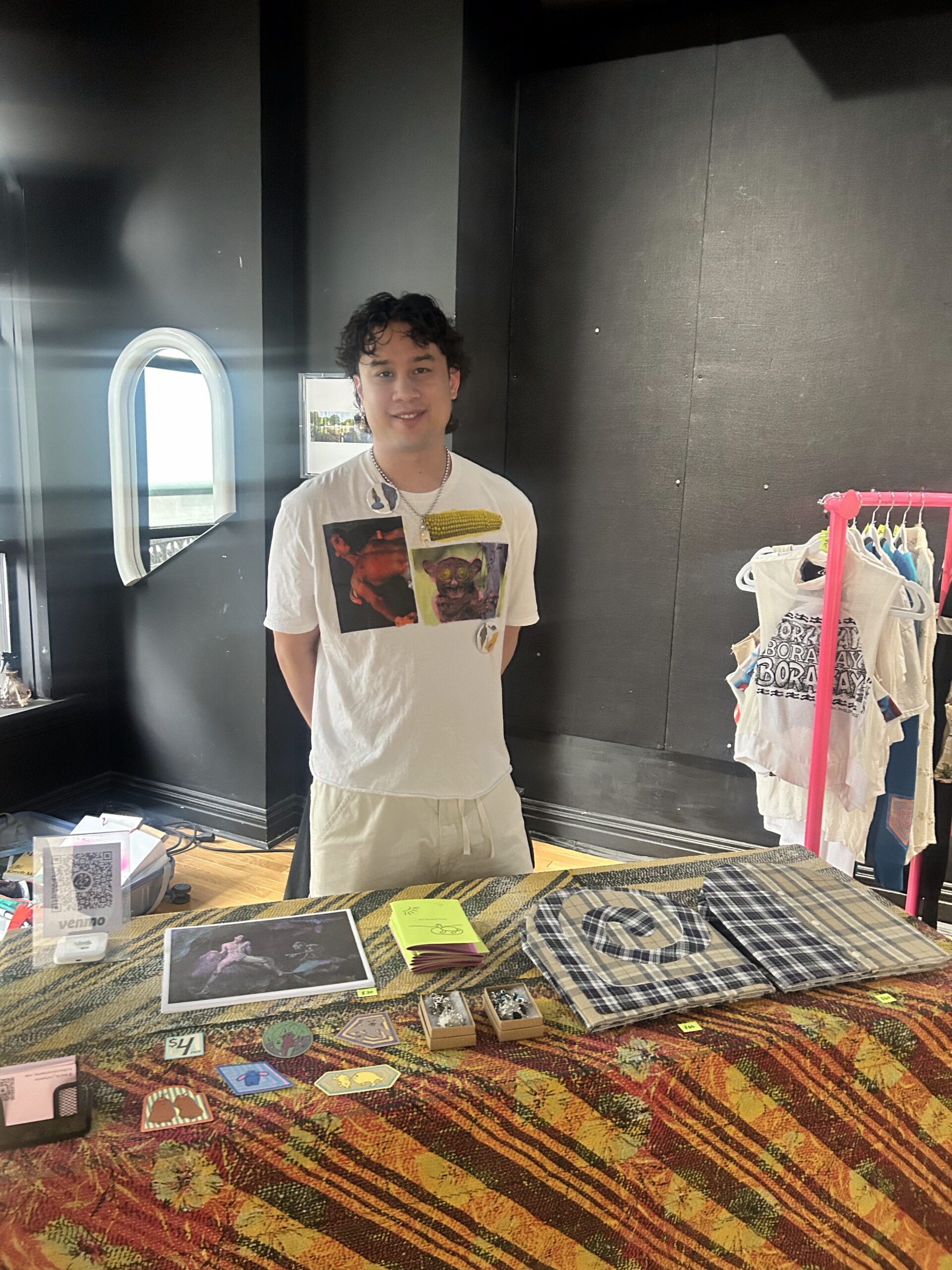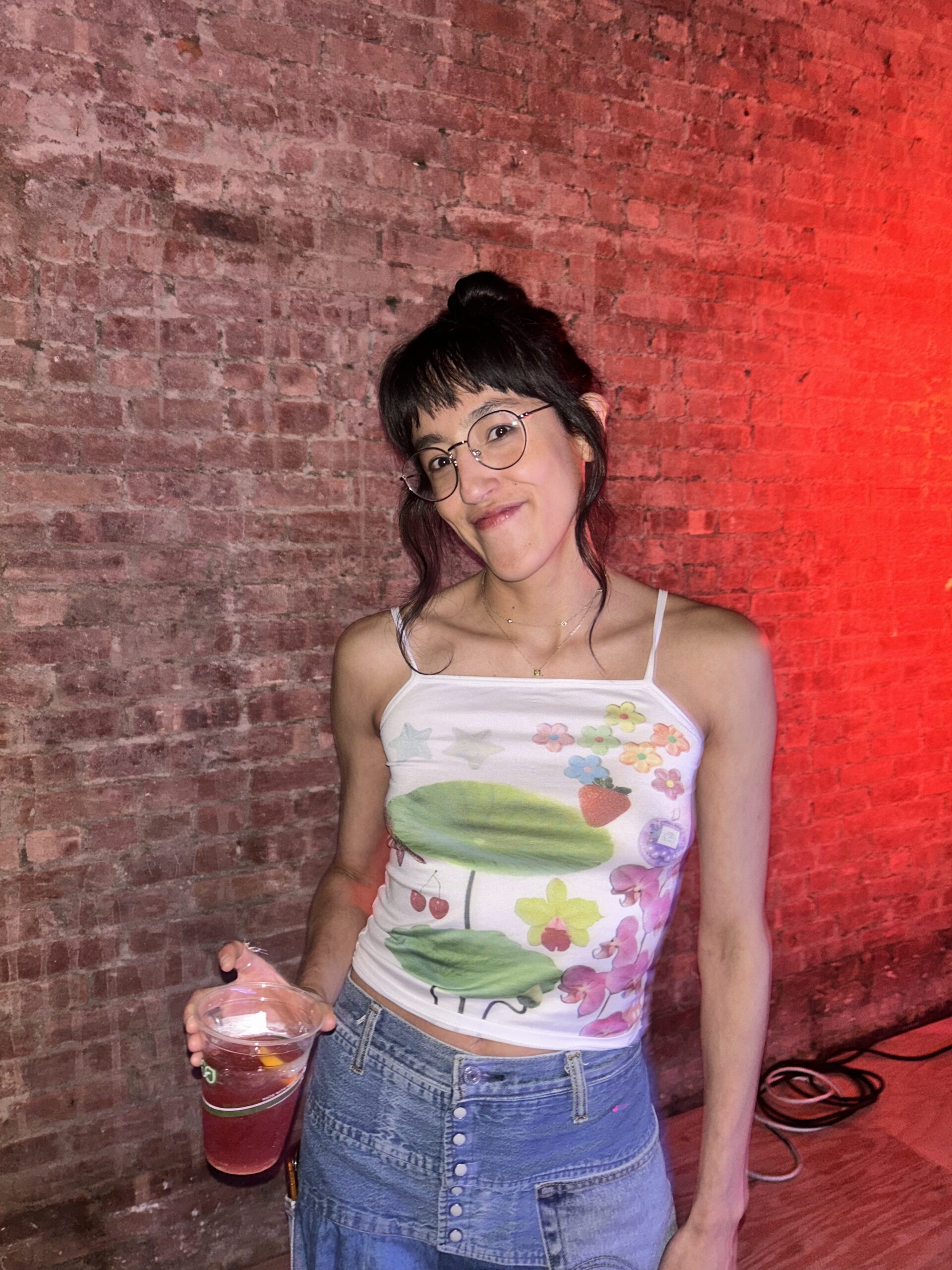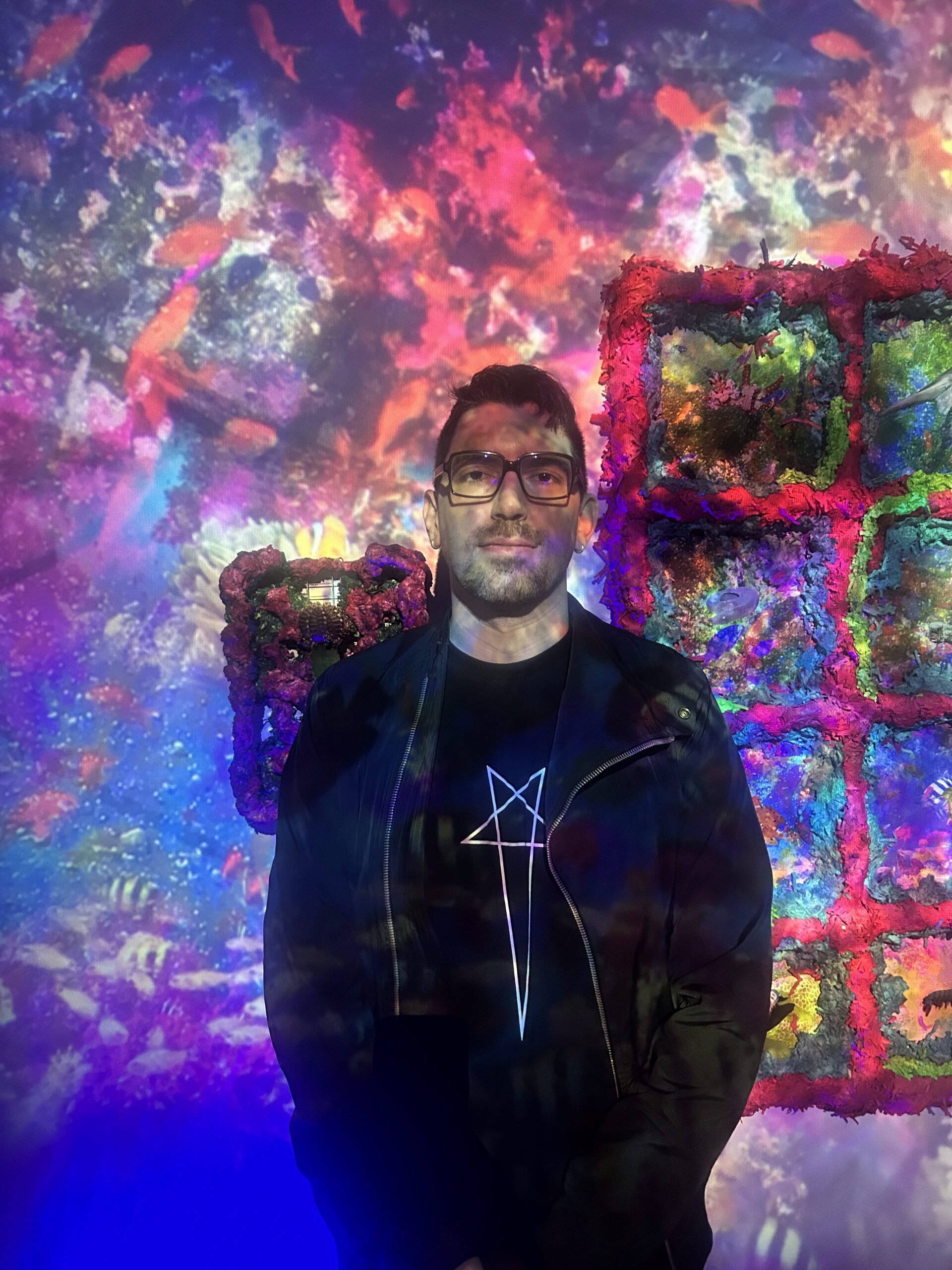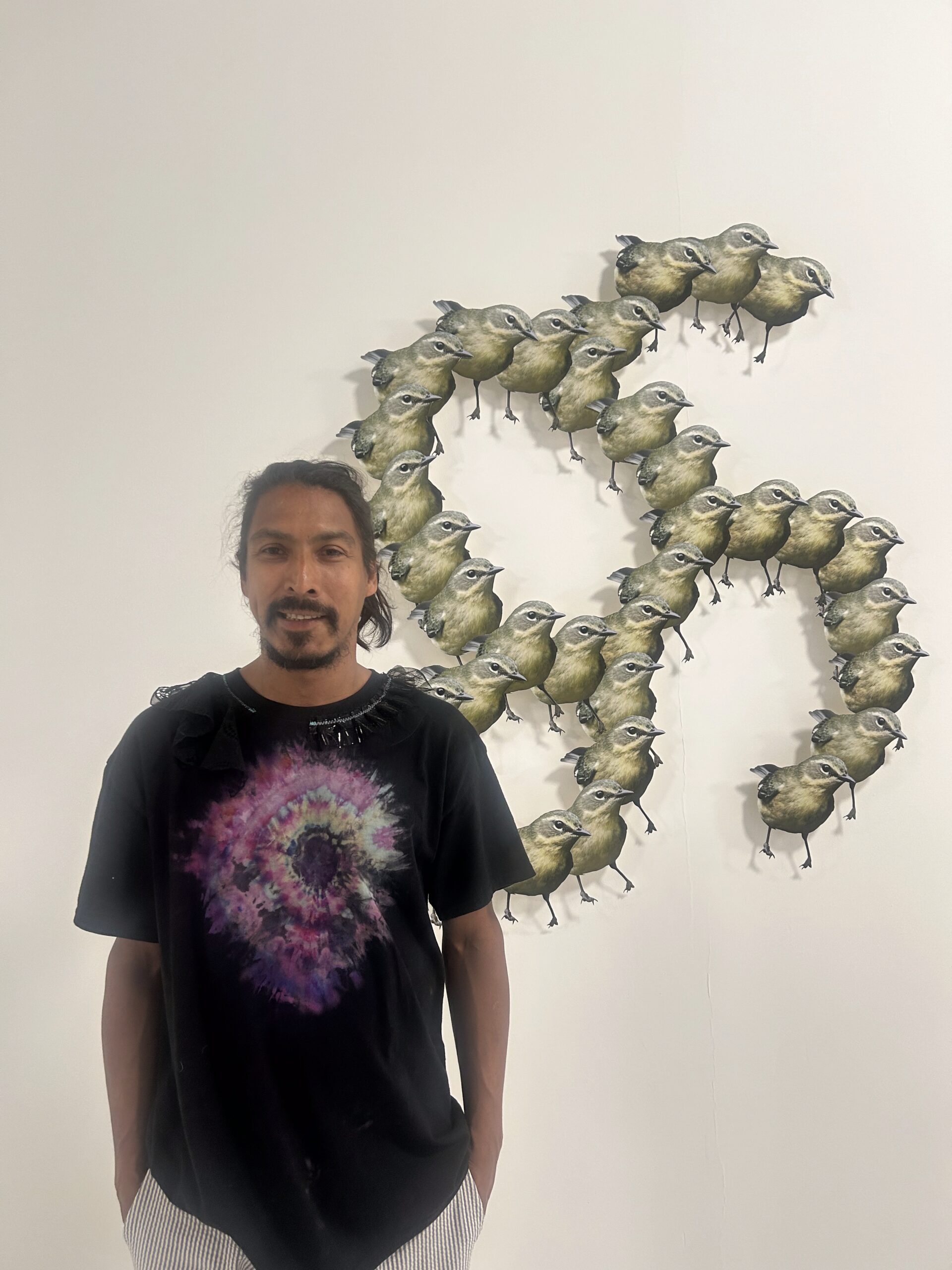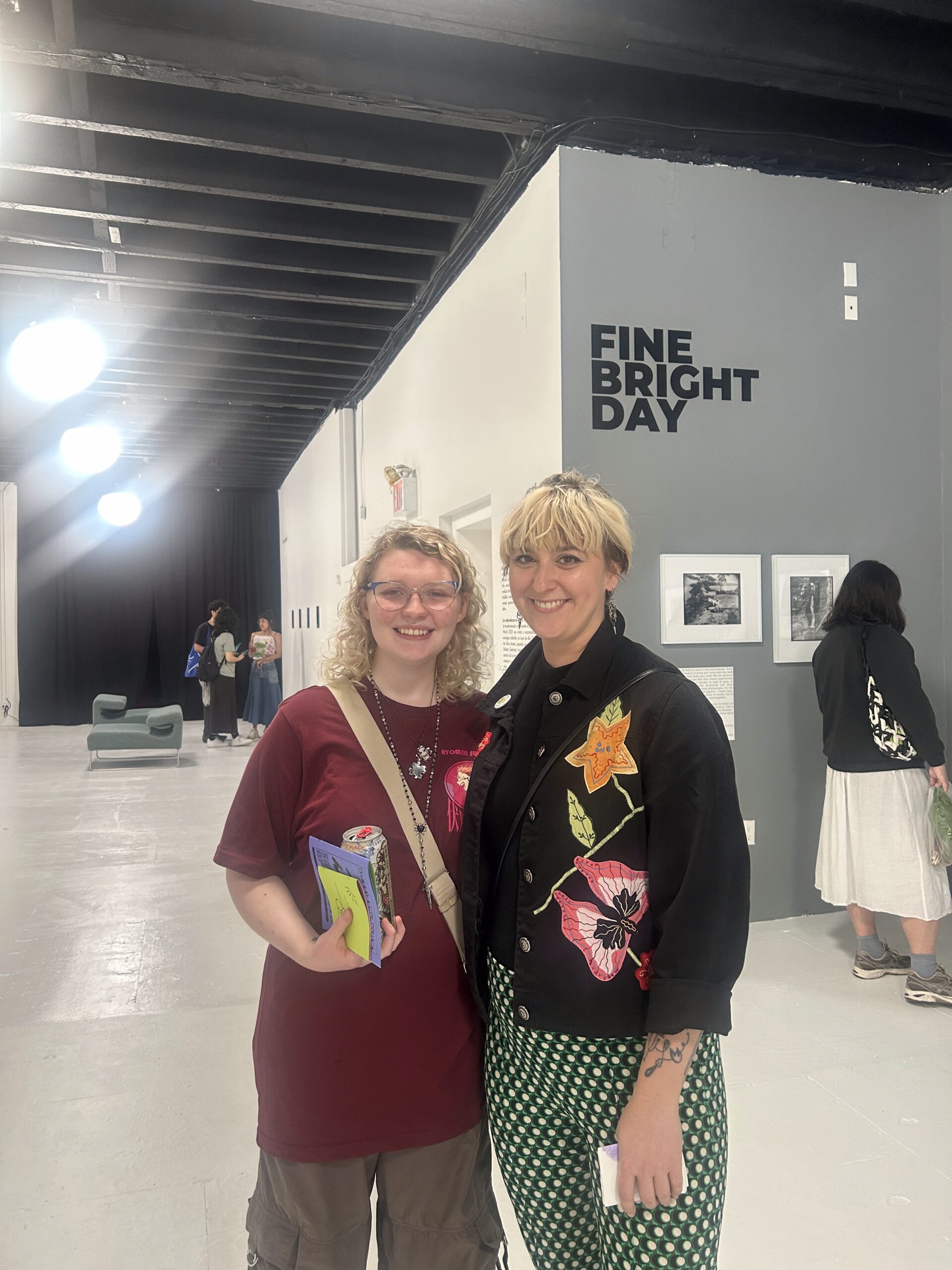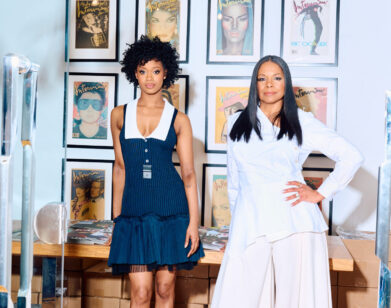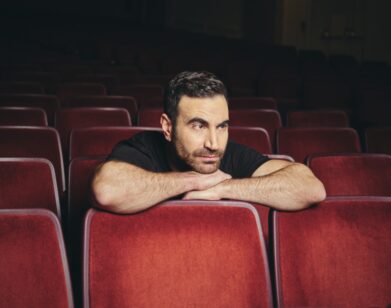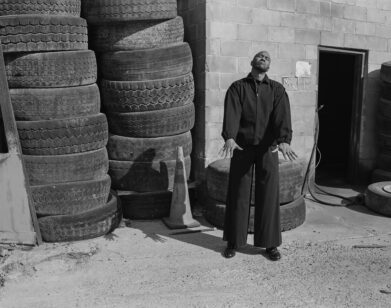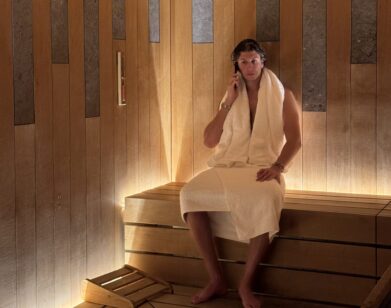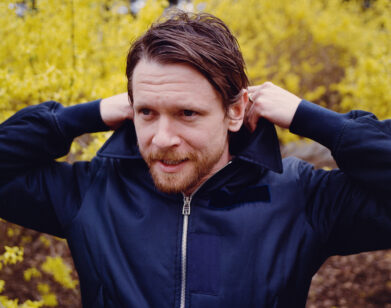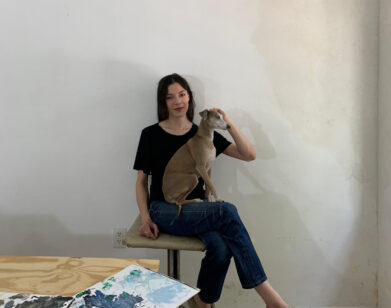TOUCH GRASS
Flowers, Fungi, and Decomposed Condoms: Inside the Mad World Earth Day Showcase
SATURDAY 2:34 PM APRIL 26, 2025 CHELSEA
Last Saturday, I learned that mushrooms and other fungi are more closely related to humans than they are to plants. I found this out while speaking with Robyn Rehak of the New York Restoration Project, an organization that helps clean and care for New York City’s Parks. Rehak was one of several eco-conscious vendors set up on the heavily-decorated third floor of a three-story building in Chelsea, where they’d all gathered to celebrate Mad World, the annual Earth Day Celebration hosted by SoMad, a queer-led art space.
This year’s Mad World was inspired by NYPR’s Queer Ecologies Garden at the Alice Austen House, a Staten Island museum that honors the eponymous radical lesbian photographer and provides a vibrant gathering space for queer communities. The colorful event included a range of installations and experiences, from live performances and film screenings to art exhibitions, pop-up shops, and a rare collection of Austen’s own photographs. All of it centered on the concept of queer ecologies, a field that blends queer theory and environmental studies to create a more sustainable relationship with nature.
Wandering from one floor to the next, the air smelling of freshly baked vegan bibingkas courtesy of Bibingka Mama, felt like exploring a living ecosystem—one was never sure what was going to sprout around the next corner. One moment, you might stumble on an eco-puppet display by Tiresias; the next, you’d be immersed in an experimental performance from Rachel Rampleman, featuring Esther the Bipedal Entity, or a panel discussion between artist Dakota Gearhart and journalist Sabrina Imbler. Mad World was full of surprises, and I spoke with several of its creators, artists and attendees to learn what drew them to this unique celebration.
———
SARA ARNO, MAD WORLD CREATOR
“I was really inspired to start this celebration a couple of years ago. This is our third iteration of showing environmental art and it’s been so wonderful to watch it bloom and grow over the years. It helps people connect and find artists that have an environmental ethos.”
———
ROBYN REHAK, CHIEF ADVANCEMENT OFFICER AT NYRP
“We were founded in 1995 by the iconic actress and singer Bette Midler, who mobilized a movement to clean and care for New York City parks. We now manage over 50 community gardens throughout the city. We built a Queer Ecologies Garden in the Alice Austen House, learning about how nature has many queer aspects to it. For instance, there’s a lot of plants that have different parts from both males and females. We call that a perfect flower. Mushrooms are interesting because they have thousands of different ways to mate. While some fungi reproduce sexually, they don’t have ‘male’ or ‘female’ sexes. Instead, they have different mating types that allow them to reproduce with any compatible partner. In nature, there’s a lot of diversity, and we celebrate that.”
———
SOPHIE REGINA, ADVANCED COORDINATOR AT NYRP
“We’ve reached over 300 different community gardens across different boroughs, bringing new green space and learning opportunities for New Yorkers. Humans and nature are intertwined. Nature, whether we want to welcome it or not, has a giant impact on us. It’s hard to put a number on how much we benefit from nature.”
———
CHRIS RODRIGUEZ, SOMAD ARTISTIC DIRECTOR
“It’s important to know queer voices right now that we’re being oppressed in a larger way, and it’s important to show that we’ve always been here. We’re trying to build, as a community, a view of what queer culture brings to the art world. It’s greater than just art—it’s community, it’s life. Connecting the art to the environment shows again that this is something that’s always been here. Most of nature is queer. We’ve been taught that we don’t exist in nature and things are unnatural, but it’s the complete opposite.”
———
KELLY POLK
“I’ve been following this collective for a while. I’m a big plant nerd. I love pitcher plants, I love Philomorphus—that’s another carnivorous plant. I’m also queer. I’m living in the world of queerness and art, it’s a super fun thing for me.”
———
JAMIE LEE
“When I step into nature, it reminds me that we’re not all a homogenized group of a species. I see myself being reflected in nature, given the intersectional identities I have. This administration is treating marginalized groups of people like they’re treating nature. They’re not understanding that life is not so black and white.”
———
KEITH LAFUENTE, DESIGNER
“To celebrate being in New York for 10 years, I’m doing a sample sale of work from the different aspects of my life; from drag to fashion shows to just my personal work and life. A lot of it is made from upcycled materials or thrifted clothes that I’ve cut up and repurposed in different ways.”
———
DOMENICA GARCIA, PERFORMANCE ARTIST
“With the current government, we need to amplify artists that are queer, POC, immigrants. We’ve also been thinking how the patterns in nature also reflect our own ways of being. Thinking about queerness in nature, plants and animals, and how also that translates to our society. A lot of my art is about being a woman and an immigrant. Art, especially performance art, can serve as a means of connection. There’s a shared space. We all look at the work, we experience something together, and then there’s something to talk about.”
———
JUSTIN ADIL
“I like supporting local art in New York City, especially queer-oriented art spaces. Given that queer voices are being marginalized, and we’re doing things like opening up national parks for logging, the environmental impact of that seems to be echoed in this. Both have relevance right now.”
———
ZULU PADILLA, SOMAD ARTIST-IN-RESIDENCE
“My work is about the relationship of neotropical migration with queer dynamics in the city. The neotropical migration of birds is the migration that happened between the tropics and the boreal forests. Every spring, all of North America is full of birds that spend the winter in the tropics. My work has been documenting this migration from the tropics and following them in Prospect Park. Part of the elements of the installation are the decomposed condoms that I have found in gay cruising areas in Prospect Park. So the installation is about the freedom of the birds and the freedom of queer dynamics in the city.”
———
NIKKI
“I wanted to bring my niece who’s visiting for the weekend to see some cool art. They’re genderqueer. They don’t live in New York City, so we were looking for cool things to do with them to help them feel supported in their identity.”
———
